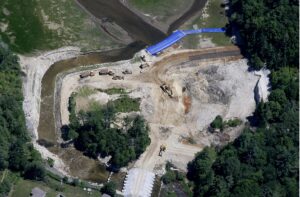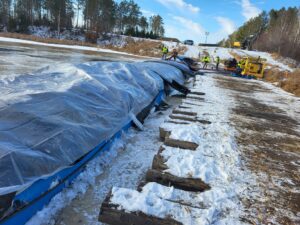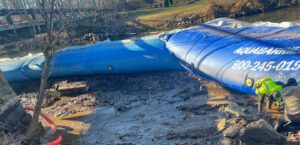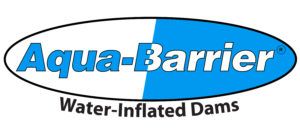Dams are an important part of our infrastructure. They also generate hydroelectric power, which is a renewable and emissions-free source of energy. In addition, dams help to control floods. Despite their importance, dams are often taken for granted. We expect them to be there when we need them, but we don’t think about the maintenance and repairs that are necessary to keep them in good condition. Unfortunately, dams can fall into disrepair if they are not properly maintained. When this happens, they can pose a serious risk to the communities that they were built to protect.


The Hazards of Dam Failure
Dam failure can cause loss of life, damage to property, and environmental devastation. It can also lead to loss of power and water supplies, and interruption of transportation and commerce. In short, dam failure can have a major impact on a community.
Dams play an important role in our lives by providing water for irrigation, drinking, industry, and hydroelectric power; controlling floods; and more. However, they require regular inspection and maintenance to prevent dam failure—which can have devastating consequences such as loss of life and damage to property—and eventual replacement when they reach the end of their useful life span.
There are many reasons why dams fail. Poor design, inadequate construction, poor maintenance, and changing conditions can all contribute to dam failure. One of the most common causes of dam failure is overtopping, which occurs when the water level in the reservoir exceeds the height of the dam. This can happen due to heavy rainfall or rapid snowmelt. Overtopping can damage or destroy the dam’s spillway, which is designed to safely release excess water from the reservoir. If the spillway is damaged or destroyed, the water level in the reservoir will continue to rise until it eventually overflows the dam itself. Another common cause of dam failure is foundation instability. This can occur due to changes in the foundation material (such as erosion or settlement), poor construction, or inadequate maintenance. Foundation instability can cause cracking or leaking in the dam structure, which can lead to overtopping and eventual failure.
The Importance of Dam Maintenance
To prevent dam failure and its devastating consequences, it is important to regularly inspect and maintain dams. Dam owners (usually government agencies or utilities) are responsible for performing these inspections and making any necessary repairs. However, even with regular inspections and maintenance, dams will eventually reach the end of their useful lives and need to be replaced. Dams are built to last, but they still need regular maintenance. Over time, dams can develop cracks or leaks. If these problems aren’t fixed, they can lead to serious issues like dam failure or collapse. That’s why it’s so important to have a team of professionals who can regularly inspect dams and make repairs when necessary. Determining when a dam needs to be replaced is a complex decision that takes into account many factors such as age, condition, safety concerns, cost of repair/replacement, environmental impacts, etc. Ultimately, the decision whether to repair or replace a dam should be made by a qualified engineer with experience in dam design and construction.
Dam Construction and Repair
When constructing a new dam, it’s important to use high-quality materials and follow best engineering practices. This will help ensure that the dam can withstand the forces it will be subjected to and provide many years of service.
Dams can sustain damage from a number of sources, including floods, earthquakes, landslides, and even human activity. When a dam sustains damage, it’s critical that the repairs are carried out quickly and correctly to avoid any further damage or danger to the surrounding area. Dam repair can be a tricky business. Because dams are such massive structures, fixing them can be complicated and expensive. That’s why it’s so important to catch problems early on before they become too big to handle. By performing regular maintenance and inspections, we can avoid costly repairs down the road.


Types of Dams
There are two main types of dams—gravity dams and embankment dams. Gravity dams are constructed using concrete or masonry blocks that can withstand hydrostatic pressure and keep the water in check. Embankment dams are made from earth material such as soil or rock which is then reinforced with a layer of asphalt or concrete to prevent water leakage. Depending on their size and purpose, both types of dam construction can have a wide range of benefits.
Flood Control
One of the primary benefits of dam construction is flood control. By blocking off part of a river’s flow, it reduces the amount of water downstream. This helps to minimize damage caused by flooding in areas downstream from the dam site. Furthermore, when properly designed and maintained, a dam can also help reduce sediment buildup in rivers and streams, which further improves flood control measures in other areas downstream.
Irrigation and Hydropower
Another benefit of dam construction is its ability to provide irrigation for nearby agricultural lands. By controlling how much water is released from a reservoir created by the dam construction, irrigation projects can be set up to ensure that fields receive just enough water for optimum crop growth without flooding them or wasting precious resources due to evaporation or excessive runoff. Additionally, many large-scale dams feature hydropower systems that use flowing water to generate electricity for local communities or even entire countries.


No matter what stage you’re in repair, maintenance, or construction, The Aqua-Barrier® water-inflated cofferdam will help ensure a safe, dry worksite for your crews. For the past 26+ years, we’ve been the number one provider of cofferdam solutions worldwide, with hundreds of successful projects under our belt. Our cofferdams are offered in a wide selection of working heights and lengths to provide you with the most optimal dewatering outcome in almost any environment. So, if you’ve got an upcoming dam or spillway project that needs to be dry and ready to go fast, reach out to us by phone, or come see us in person at our world headquarters in Waller, TX!


